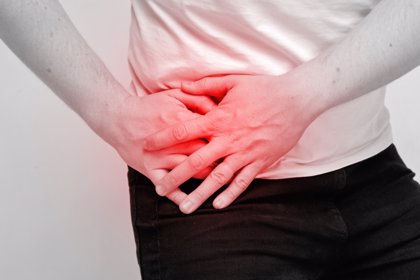The main symptom of appendicitis is severe pain in the right side of the abdomen.
The appendix is located at the beginning of the large intestine, in the lower right area of the abdomen. It is worm-shaped and pink in color when not inflamed. Inside there are many lymphoid follicles of the immune system, similar to those in the tonsils of the pharynx. It is generally accepted that perforation occurs between 24 and 48 hours from the onset of symptoms. However, in 13% of cases it can be perforated within 24 hours.
Most frequent complications of appendicitis:
- Abdominal abscess.
- Diffuse peritonitis.
- Pylephlebitis: the most serious and rare, septic emboli are formed that go to the liver and may form abscesses.
Currently it is rare for these complications to occur, except in the case of people who have weakened defenses (elderly), or in people with very advanced appendicitis due to a late diagnosis.
The problem with appendicitis is not the inflammation of the appendix itself, but rather that if we let the condition evolve, the appendix can become necrotic and literally rot inside the abdomen. This would cause an emergency situation, peritonitis, with great risk to the patient’s life. Therefore, it is a medical emergency.
The symptoms of appendicitis are:
- The pain begins in the epigastrium (in the upper abdomen) or in the periumbilical region (in the center of the abdomen in the area of the navel). It is a dull and continuous pain (crampy pain).
- Nausea and vomiting.
- The pain radiates to the right flank of the abdomen and ends up being located in the right iliac fossa (lower right area of the abdomen) continuously.
Appendicitis occurs as a result of the obstruction of its lumen, that is, of the internal duct of the appendix. This obstruction happens for different reasons:
Lymphoid follicle hyperplasia: it is the most frequent cause of appendicitis. The appendicular lymphoid follicles work just like the pharyngeal tonsils, so if they become infected by a microbe they swell, grow and block the lumen.
- Appendicolith or fecalith: it is the second most frequent cause. Through the large intestine passes the entire fecal mass to the anus. Sometimes a small stool can occlude the appendicular lumen.
- Foreign bodies: in the same way as a fecalith, a foreign body that we have ingested could obstruct the appendicular lumen, as long as it was the right size.
- Microorganism and parasites: either because they directly obstruct the lumen or because they inflame the lymphoid follicles. The microorganism most closely related to appendicitis is Yersinia.
- Tumors: very rarely they show their face causing appendicitis; they can be from the appendix itself or from the colon.
Several stages or states can be differentiated in appendicitis:
Stage 1. Simple or catarrhal appendicitis: when the lumen of the appendix is obstructed, the mucus it secretes, as any part of the intestine secretes, cannot flow freely and begins to accumulate inside. This causes the bacteria that are part of the intestinal flora to multiply excessively and start the inflammatory process. At this stage the appendix has a normal outward appearance and only the inflammation can be identified under a microscope.
Stage 2. Phlegmonous or fibrinous appendicitis: Gradually the appendix distends as its internal pressure increases. There comes a time when the pressure is too much that the blood cannot properly irrigate the appendix. The appearance of the appendix is inflammatory: red and enlarged.
Stage 3. Gangrenous appendicitis: the walls of the appendix weaken, both due to the lack of blood supply and the increase in internal pressure. There are parts that begin to necrose and turn black and may secrete pus.
Stage 4. Perforated appendicitis: finally the walls break and all the pus and feces are released into the abdominal cavity, giving rise to peritonitis.
The symptoms can be of any type and to any degree, only a good abdominal examination can guide the diagnosis of appendicitis with greater certainty.
The treatment of appendicitis is surgical and urgent; The appendix is removed and the inflammation is removed (appendectomy). Only in patients with subacute appendicitis, which has a longer duration without general involvement, surgery is usually performed later.
If there is generalized peritonitis, a lavage of the abdominal cavity is performed.
In all cases, intravenous antibiotic prophylaxis is performed.







